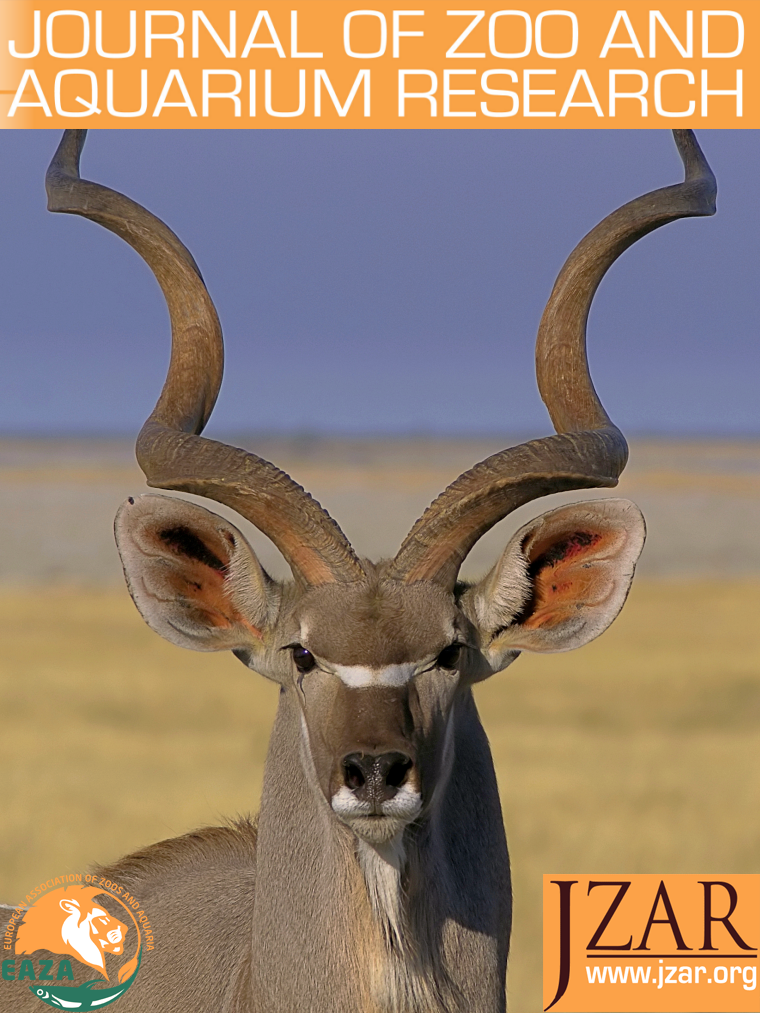Investigations on rumen health of different wild ruminants in relation to feeding management
DOI:
https://doi.org/10.19227/jzar.v1i1.14Abstract
In this study, the rumen metabolism of four ruminant species – blackbuck (Antilope cervicapra), barbary sheep (Ammotragus lervia), sika deer (Cervus nippon dybowskii) and addax antelope (Addax nasomaculatus) – from the Nuremberg Zoo was investigated in relation to their feeding management. Parameters of microbial fermentation in the rumen as well as rumen tissue samples were examined. Additionally, the offered and refused food was weighed, analysed and a dietary intake calculation for these ruminant species was performed. Three of the four ruminant species – blackbuck, barbary sheep and addax antelope – all grazers, showed severe characteristics of subacute ruminal acidosis due to a diet high in fermentable carbohydrates (NfE ? 55% of DM basis) and low in fibre (XF ? 18% of DM basis). This was indicated by numerous microabscesses within the rumen mucosa. These results demonstrate that subacute ruminal acidosis is still a severe problem in captive wild ruminants, which are often fed inappropriate diets with a high concentration of easily digestible carbohydrates.
Downloads
Published
How to Cite
Issue
Section
License
JZAR fulfils the DOAJ definition of open access and provides free and open access to the full text of all content without delay under a Creative Commons licence. The copyright holder of JZAR publications grants usage rights to third parties, allowing for immediate free access to the work and permitting any user to read, download, copy, distribute, print, search, or link to the full texts of articles.







